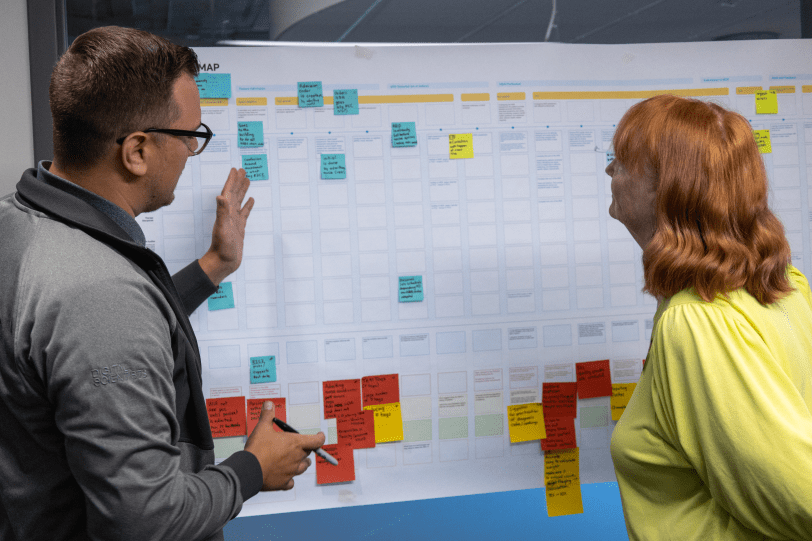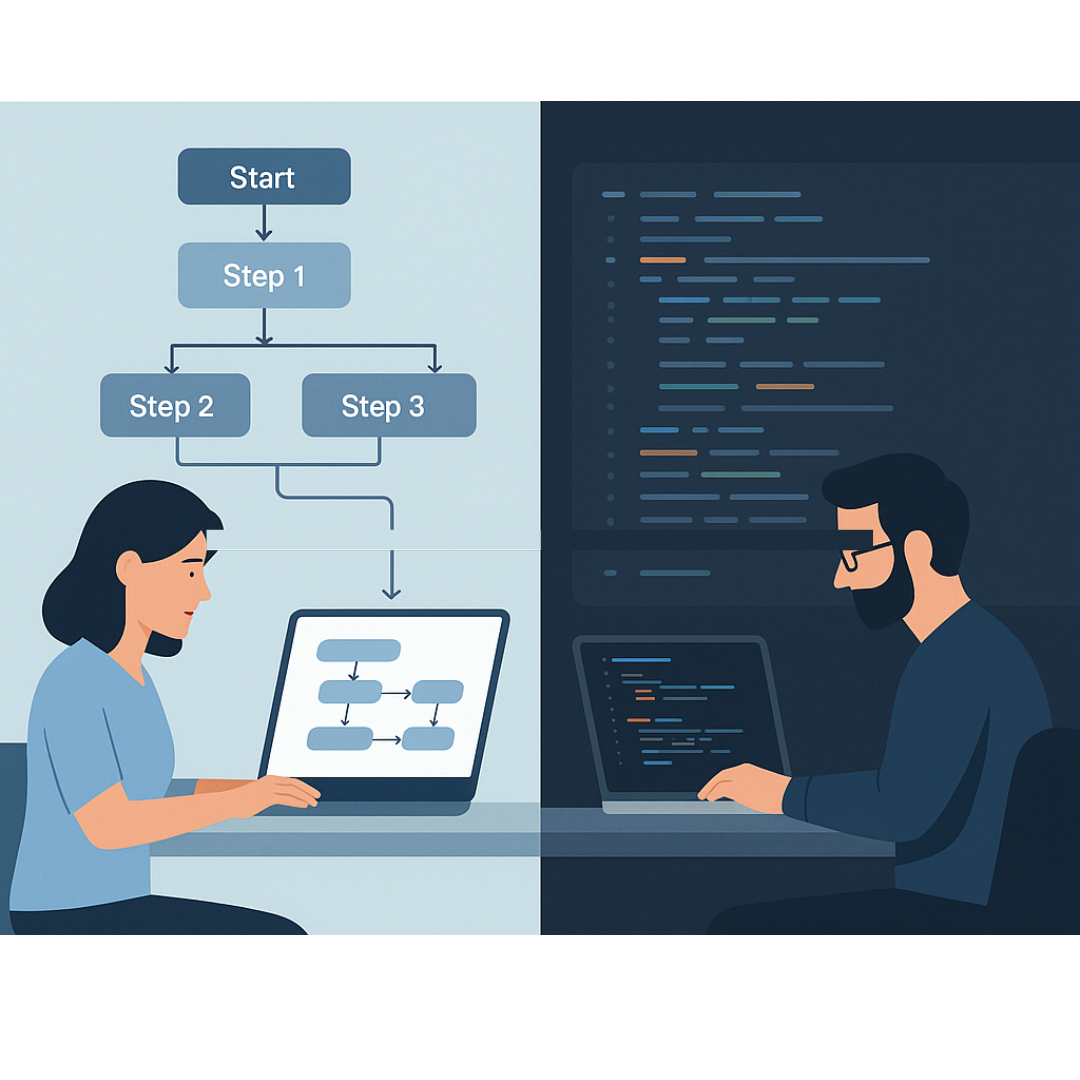Fragmented workflows are a common problem for our clients. Without a centralized platform, they resort to using a variety of tools, which leads to disconnected experiences and frustration. This results in slower work and increases the likelihood of errors. They also lose the value of centralized data and insights, and they often resort to time-consuming manual input. We’ve also seen clients use tools that have features that aren’t relevant or that have limited customization, so that they don’t end up with something that clearly meets their needs. This also limits a team’s ability to collaborate and communicate seamlessly, so they often resort to solutions outside of these tools, such as email. Often, each tool has its own learning curve, which means extra time spent learning and managing multiple platforms.
A centralized platform, customized to a client’s needs, can transform chaotic processes into cohesive and efficient workflows.
The benefits of a custom, centralized platform
Integrating workflows into one centralized location has many advantages.
Improved efficiency and productivity
Eliminates the frustrating, time-consuming task of juggling multiple tools to stitch together workflows. We recently designed an integrated platform prototype customized for healthcare coaches where they can manage all of their workflows. This will eliminate their current need for two tools for managing and taking notes during their patient appointments, another tool for setting and managing appointments, another tool for managing telehealth, and a lack of client data and insights.
Enhanced collaboration and communication
More visibility and opportunities for inter-departmental collaboration and insights. We are currently developing an integrated platform for nuclear facility inspections that allows them to leave comments, track updates, receive notifications, and communicate with their team and facility managers. This will eliminate numerous emails, shared printouts, and the lack of transparency and historical data that they currently resort to.
Increased relevance and value
A custom solution eliminates unnecessary features in existing platforms and gives clients functionality tailored specifically to their needs. We’ve seen users overwhelmed by the number of irrelevant options in their current tools, as well as frustrated by the inability to customize certain features that are relevant to their workflows.
Better data management and insights
Centralized data allows more flexibility for gathering and tracking valuable insights, as well as for managing this data. The ability to gather insights from data is a significant issue for a lot of our clients. For many, this is critical to gathering insights and gauging performance.
Simplified training and onboarding processes
Streamlining processes into one location focuses training efforts. This saves clients a lot of time, is less overwhelming for users, and eliminates a lot of effort in managing multiple tools.
A user-centered process for designing a centralized platform
A well-defined and communicated design process helps align expectations and goals.

Define clear goals and objectives for the platform
Collaborate with stakeholders to understand their business objectives and needs. We often begin with an alignment workshop, which includes engaging exercises such as the MoSCoW (must have, should have, could have, won’t have) method to categorize and prioritize requirements and project scope.
Conduct user research to understand needs and workflows
Interview users to gather insights about their needs, goals, and pain points. We synthesize themes and insights to share findings with stakeholders and recommend design improvements.
Evaluate current tools and processes
Evaluate the products clients currently use and how they fit with their workflows to recommend technical integrations and features for the new platform.
Information architecture to organize and structure content
Visualize workflows to confirm alignment, help guide design and development scope, and align with platform features. Also, organize and structure content into a visual representation of a site map to show hierarchy and relationships between sections of the product.
Iterative design and prototyping to ensure usability and functionality
Design wireframes, essentially blueprints of the user interface, to quickly communicate content, hierarchy, and functionality for each unique page. This sets the foundation to design a clickable prototype with brand attributes and build a design system with reusable UI components and styles. A clickable prototype provides a tangible experience to validate with users, gather feedback, get stakeholder alignment, and guide development scope and efforts.
Key considerations for designing a successful centralized platform
A unified dashboard for a prioritized view of tasks and data
A dashboard is the first page users encounter, and the most valuable content to prioritize is tasks with the most urgency, notifications, and essential data. This may also include shortcuts to content or functionality that users use most often.
Seamless integration with existing tools and systems
Based on scope and needs, there may be existing mature tools that aren’t worth rebuilding but instead integrate into the centralized platform. The important thing is to design the platform so that this integration provides a seamless user experience and prioritizes features that provide value to users.
Relevance and prioritization
Based on understanding user needs through research, prioritize features that are essential and beneficial. Avoid feature creep, which complicates user workflows. Keep features and interactions simple and intuitive.
Data visualization for reporting and analytics
Centralizing data allows more flexibility for gathering and tracking valuable insights. Use the power of data visualization as an engaging means to communicate complex data. Including customization features can also provide valuable flexibility for users.
Generative AI for added value
There may be ways to simplify or add additional insights to user workflows by using generative AI. There are some things that it currently does really well, such as summarizing large amounts of content. We recently designed a centralized healthcare platform where generative AI summarizes large amounts of clinical notes to provide healthcare coaches with a summary of each patient’s condition and progress. This is in response to the healthcare coaches pain point of the time-consuming task of reading through a repository of patient clinical notes.
Design for all users
Keep the abilities of all users in mind and follow global accessibility guidelines for designing for people with disabilities. Designing a custom platform provides the opportunity to not depend on the usability shortcomings of other platforms. Read our insights on research and design for accessibility.
A design system for consistency, efficiency and scalability
Concurrently designing a design system with reusable UI components and styles, either beginning from an UI kit or from scratch, helps design smarter. It will ensure the look and experience are consistent, provide clear guidance to developers, and help design and scale the product faster.
Feedback and iteration
Use an iterative design process to refine and improve the product based on user feedback and testing results. Initially, a clickable prototype is indispensable to communicate the experience of the platform, gather feedback, and quickly explore updates.
By integrating all workflows into one centralized platform, you can significantly enhance efficiency, productivity, and collaboration. A user-centered design approach, which includes clear goal setting, thorough user research, evaluation of current tools, and iterative prototyping, ensures that the platform aligns with user needs and business objectives.



